#801 Alphonse Eugene “Al,” “Fuzzy” Smith
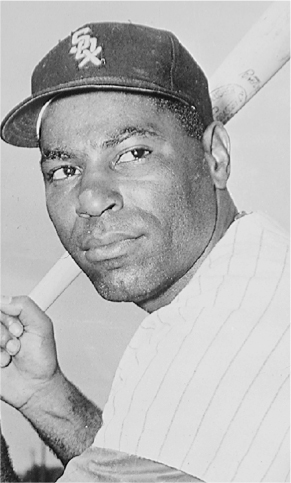
OF-3B, Indians, White Sox, Orioles, Red Sox, 1953–64
A multi-talented athlete, Al Smith once scored an amazing 10 touchdowns in a high school game for his St. Louis high school and was also a Golden Gloves boxing champ. In the World Series of 1954, he hit the first pitch from Giants ace Johnny Antonelli in Game Two for a home run in a losing effort as the Indians were swept by the Giants. In 1955, Smith led the AL with 123 runs scored and hit an impressive .306. Smith was an All Star in 1955, when he hit .306, and in 1960, when he hit .315.
LIFETIME STATS: BA: .272, HR: 164, RBI: 676, H: 1,458, SB: 67
#802 Sixto Joaquin Lezcano
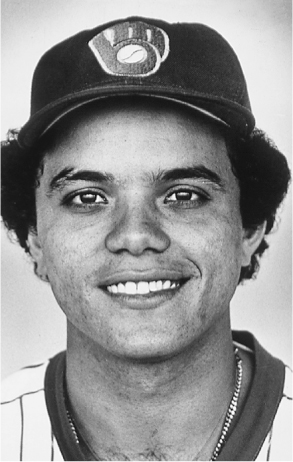
OF, Brewers, Cardinals, Padres, Phillies, Pirates, 1974–85
Debuting at the tender age of 20 with the Brewers, the versatile Lezcano started slowly his first few seasons, blossoming in 1977, as he hit 21 doubles and 21 homers and led all American League outfielders in assists the following year. His best year was in 1979, when he hit .321 with 28 homers and 101 RBI, slugged a robust .573 and also won a Gold Glove.
LIFETIME STATS: BA: .271, HR: 148, RBI: 591, H: 1,122, SB: 37
#803 Charles Albert “Chief” Bender
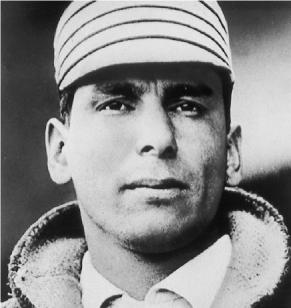
RHP, A’s, Baltimore (FL), Phillies, White Sox, 1903–17, 1925. Hall of Fame, 1953
Charles Albert Bender was called “Chief,” as he was one quarter Chippewa. He endured the racism with aplomb, but he signed his autograph “Charles Bender” and manager Connie Mack always called him “Albert.” Bender joined the A’s in 1903 and had a 17-14 record. Bender is credited by some as the inventor of the slider. In 1910, he won 23 games and had an impressive 1.58 ERA while leading the league in winning percentage (.821). Mack, who had such illustrious hurlers as Eddie Plank, Lefty Grove and Rube Waddell, once said that if he had one game he had to win, he would give the ball to Albert Bender.
LIFETIME STATS: W: 212, L: 127, SV: 34, ERA: 2.46, SO: 1,711, CG: 255
#804 Kevin Lee Seitzer
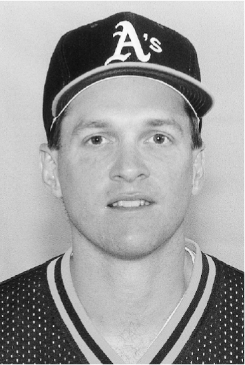
3B-1B-DH, Royals, Brewers, A’s, Brewers, Indians, 1986–97
A consistent hitter, Seitzer had six over-.300 seasons, despite many injuries throughout his 12-year career. He broke in as a late season callup with the Royals in 1986 and replaced Kansas City legend George Brett at third. (Brett was shifted to first). The following year, Seitzer, still technically a rookie, hit .323 and led the league in hits with 207, being named to the AL All Star team in the process. He would have also been named the AL Rookie of the Year had it not been for Mark McGwire, who slugged 49 homers that year for the A’s. Seitzer also had a memorable August game against Boston as he went six-for-six with two homers and seven RBI.
LIFETIME STATS: BA: .295, HR: 74, RBI: 613, H: 1,557, SB: 80
#805 Roger Maxwell “Doc,” “Flit” Cramer
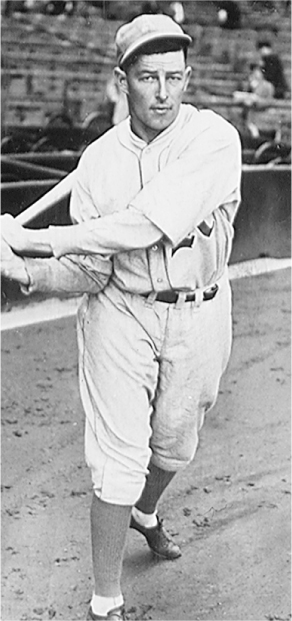
OF, Athletics, Red Sox, Senators, Tigers, 1929–48
Cramer depended on speed and his ability to hit the ball to all fields. At 6'2" and 185 pounds, considered big for his time, Cramer was not a power hitter, but was an excellent contact hitter. He batted leadoff, leading the league seven times in at bats, and once in hits with 200 in 1940. He also set an AL record and tied a major league mark by going six-for-six twice in his career, once in 1932, the other in 1935. In 1936 he was traded to the Red Sox, where he had his best years as he was named to the AL All Star team for four straight years (1937–40).
LIFETIME STATS: BA: .296, HR: 37, RBI: 842, H: 2,705, SB: 62
#806 Andrew “Rube” Foster
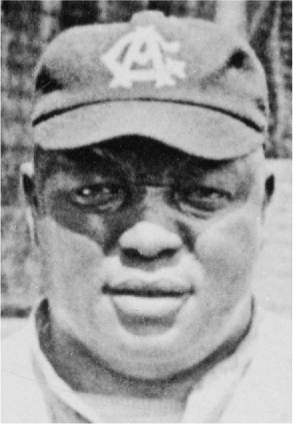
RHP-1B-OF, Chicago Union Giants, Cuban X-Giants, Philadelphia Giants, Leland Giants, Chicago American Giants, 1902–26. Hall of Fame, 1981
Foster was the first great pitching star of the Negro Leagues and later, its greatest manager. In 1902, the 6'4", 200-pound Foster was playing for a semi-pro team in Texas. He was credited with 51 wins that year, including a victory over the great Rube Waddell, from whom Foster got his nickname. In 1905, he won 51 of 55 games for the legendary Philadelphia Giants, and was the dominating black pitcher of that era. Foster had a blazing fastball, an accurate curve ball and changed speeds better than most pitchers. Foster led the Philadelphia Giants to a pair of Negro League championships in 1905–06. In 1911, Foster became the manager of the Chicago American Giants. Foster was a terrific manager, who preached the hit-and-run, the double steal and bunting for base hits. The Chicago Americans won several Negro National League championships, including five in a row from 1918–22. In one game in 1919, the Chicago Americans were down, 18–0 after six innings. The team rallied to tie the game 18–18 with nine runs in the ninth, and the game was called because of darkness. In 1981, Foster was elected to the Hall of Fame on the basis of his contributions to baseball.
LIFETIME STATS: not available
#807 George Daniel “Buck” Weaver
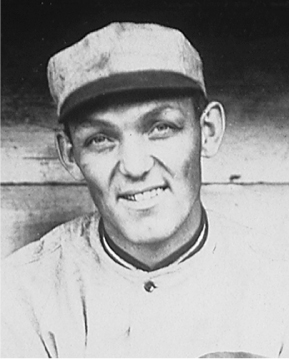
SS-3B, White Sox, 1912–20
Weaver was one of seven Chicago White Sox to be banned from baseball for life following the 1919 World Series. Weaver’s crime was that he knew about the infamous plan to fix the Series, but chose not to tell anyone in authority about it. Ironically, he had a fantastic Series, hitting .324 with four doubles and a triple and fielded 27 chances flawlessly. Weaver was regarded as a fine fielding third baseman, who would play so shallow he would negate the bunting game, a tactic often used in the “dead bal”l era. Despite a petition signed by 14,000 Chicagoans and numerous personal appeals to the Commissioner, Weaver was never allowed back in the majors.
LIFETIME STATS: BA: .272, HR: 21, RBI: 420, H: 1,308, SB: 172
#808 Delbert W. “Del” Rice
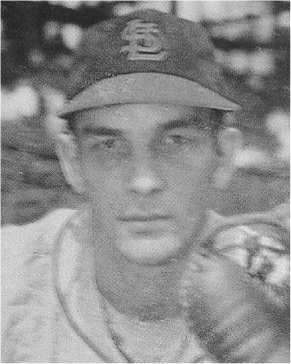
C, Cardinals, Braves, Cubs, Orioles, Angels, 1945–61
Rice, a smart defensive catcher in his early days with the Cardinals, hit .500 in the Cardinals’ 1946 World Series win over the Red Sox. He played most of his career with St. Louis, never hitting much for average, but had the occasional pop as he hit 12 homers in 1947 and 11 in 1952. He was also named to the NL All Star squad in 1953. He made up for his lack of offense with his fine throwing arm and glove as well as his expert handling of pitchers.
LIFETIME STATS: BA: .237, HR: 79, RBI: 441, H: 908, SB: 2
#809 Shawon Donnell Dunston
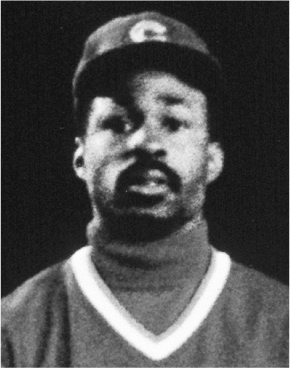
SS, Cubs, Giants, Pirates, Indians, Cardinals, Mets, 1985–2002
The free-swinging Dunston was the first pick in the 1982 amateur draft by the Cubs, and after having some difficulty at first with Chicago in 1985, he rebounded with a fine year in 1986, with 17 homers, the most by a Cubs shortstop since Ernie Banks in 1961. He was named to the All Star team twice with the Cubs. A herniated disc curtailed his effectiveness the next few seasons, and he signed with the Giants in 1996. The next few years, Dunston meandered about the majors as a utility player. His most memorable post season moment was with the Mets in 1999, when, after a 12-pitch at bat, he started the winning Mets rally with a single in the 15th inning in the League Championship Series against the Atlanta Braves.
LIFETIME STATS: BA: .269, HR: 150, RBI: 668, H: 1,597, SB: 212
#810 James Leslie “Hippo” Vaughn
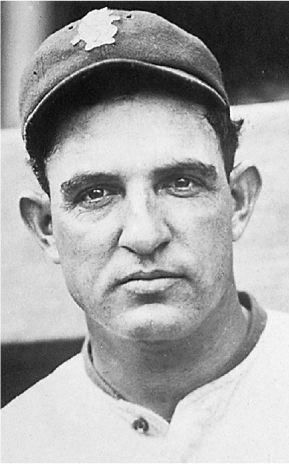
LHP, Highlanders, Senators, Cubs, 1908, 1910–21
James Leslie Vaughn, nicknamed “Hippo” for the way he ran, won 20 or more games in a season five times in his career. A durable switch-hitting lefty, Vaughn led the National League twice in innings pitched and starts, and twice led the loop in strikeouts. The hard-luck southpaw went only 1–2 in the 1918 World Series against the Red Sox, but had a sterling 1.00 ERA. Vaughn had a memorable game in 1917 when he and Reds’ pitcher Fred Toney were locked in perhaps the best pitching duel in major league history as both were throwing no-hitters after nine complete innings. The Reds got to Vaughn in the top of the 10th on a single, an error and an infield hit off the bat of Jim Thorpe (yes, THAT Jim Thorpe) as the Cubs lost 1–0.
LIFETIME STATS: W: 178, L: 137, SV: 5, ERA: 2.49, SO: 1,416, CG: 215
#811 Juan Milton Romero Samuel
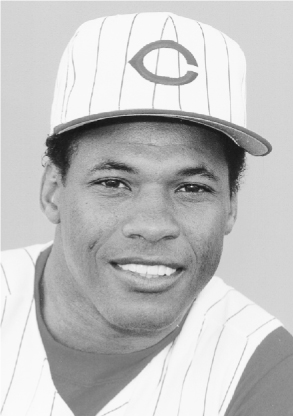
2B-OF, Phillies, Mets, Dodgers, Royals, Reds, Tigers, Blue Jays, 1983–98
Samuel broke in with a bang with the Phillies as he featured both speed and power at the top of the lineup. He was named the Rookie of the Year by the Sporting News in 1984, setting a National League record with 701 at bats while compiling a .272 batting average to go along with 15 homers, 69 RBI and a then rookie record of 72 steals. The down side of Samuel’s game was the alarming number of strikeouts from a leadoff hitter, 168 in 1984 alone. Samuel, when he made contact, was excellent, as he reached double digits in doubles, triples, and home runs in each of his first four years.
LIFETIME STATS: BA: .259, HR: 161, RBI: 703, H: 1,578, SB: 396
#812 Henry Clement “Heinie” Peitz
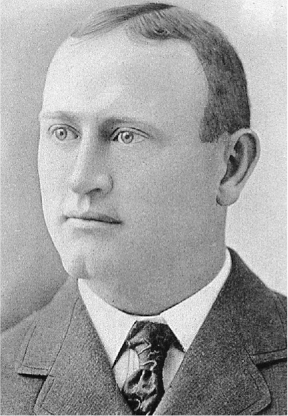
C-3B-1B-2B, Cardinals, Reds, Pirates, 1892–1906, 1913
A reliable catcher in the early days of baseball, Henry Clement Peinz was also very versatile and played every infield position but shortstop. He hit a career-high .315 in 1902. He was usually behind the dish when southpaw Ted Breitenstein was pitching for the Reds and the two soon became known as the Pretzel Battery, because of their German ancestry. Despite averaging less than 100 games from 1893 to 1895, Peinz had nine triples in 1893 and 1894, and a career-high 12 three-baggers in 1895, an unusually high count for supposedly slow catchers.
LIFETIME STATS: BA: .271, HR: 16, RBI: 560, H: 1,117, SB: 91
#813 Emil Frederick “Irish” Meusel
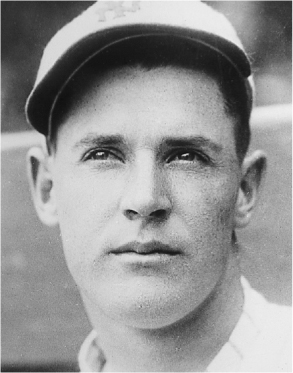
OF, Senators, Phillies, Giants, Dodgers, 1914, 1918–27
Emil Meusel was dubbed “Irish” not because he was of Irish descent (he was French) but because he looked Celtic. The older brother of Yankee star Bob Meusel, he came into his own with John McGraw’s Giants, with 100 or more RBI years in his first four seasons as the Giants won four straight flags from 1921 to 1924. He was also great in the clutch as he drove in 17 runs in 23 World Series games. He slugged over .500 three times and for all that power Meusel rarely struck out, fanning only 199 times in his entire career, and never more than 33 in a single season.
LIFETIME STATS: BA: .310, HR: 106, RBI: 819, H: 1,521, SB: 113
#814 Jorge Posada
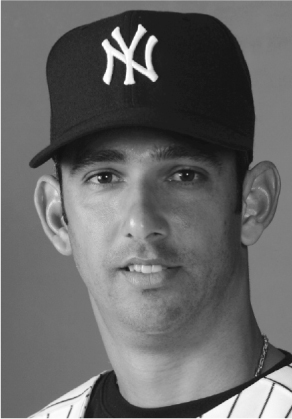
C-DH, Yankees, 1996-2011
Posada was a worthy successor to the likes of Bill Dickey, Yogi Berra and Thurman Munson in the pantheon of great Yankee catchers. Posada was drafted by the Yankees in 1990, and made his way to the big leagues in 1996. He became a regular in 1998. His best season was in 2003, when he hit .281 with 30 homers and 101 RBI. But it was behind the plate where the five-time All Star was most effective. Posada led American League catchers in putouts for three straight years (2001-03). His career fielding percentage of .992 behind the plate is 45th all-time.
LIFETIME STATS: BA: .273, HR: 275, RBI: 1,065, H: 1,664, SB: 20
#815 James Robert “Bob” Horner
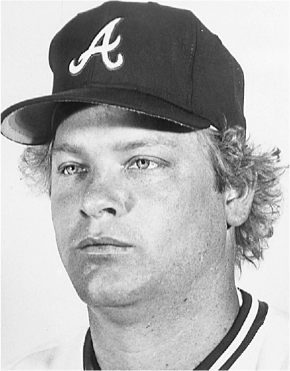
3B-1B, Braves, Cardinals, 1978–86, 88
Bob Horner stepped off the campus of Arizona State University and made a big splash in the major leagues with the Braves. After winning numerous college awards for his slugging prowess, he started auspiciously as he homered in his first game against Bert Blyleven and ended the season with the tremendous ratio of one homer per every 14.04 at bats, the most by any Rookie of the Year. Horner, dubbed “Piggy” by some of his less beefy teammates, also had injury problems throughout his career. But when he was right, Horner could slug the baseball; he hit a career-high 35 homers in 1980. He routinely combined with Dale Murphy to provide a lethal one-two punch in the heart of the Braves’ batting order.
LIFETIME STATS: BA: .277, HR: 218, RBI: 685, H: 1,047, SB: 14
#816 Frank Joseph Thomas
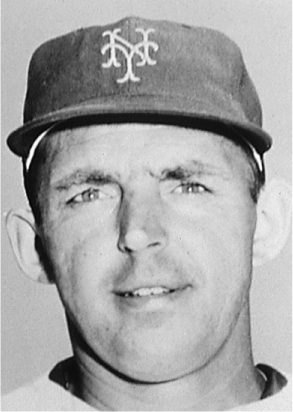
OF-3B-1B, Pirates, Reds, Cubs, Braves, Mets, Phillies, Astros, 1951–66
Pittsburgh-born Frank Thomas made a hit with the hometown fans in his early years with the Pirates. He belted 30 homers and knocked in 102 runs in his first full season (1953) and because of his blue collar ethic and Eastern European background, the fans loved him as one of their own. Thomas hit 23 or more homers from 1954 to 1958. Thomas became an original Met in 1962, and he found the short left field porch to his liking, clouting 34 homers to lead the team. Thomas had the distinction of playing in the New York Giants’ last game in 1957, where he was playing first for the Pirates, and playing the first game for the Mets in left field, both games being played in the Polo Grounds.
LIFETIME STATS: BA: .266, HR: 286, RBI: 962, H: 1,671, SB: 15
#817 Tommy McCarthy
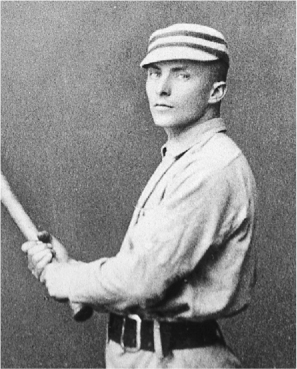
OF, Boston (UA), Braves (NL), Phillies (NL), Browns (AA), Boston (NL), Dodgers, 1884–96. Hall of Fame, 1946
Perhaps the least known member of the Hall of Fame, McCarthy did have some fine seasons in a 13-year career in three major leagues. He came into his own as a player in the 1888 season with the American Association’s St. Louis Browns, helping them to a pennant as he played well defensively and swiped 93 bases and led the league with 83 more in 1890. He and Hugh Duffy, while they were helping the Braves win the NL pennants of 1892 and 1893, were called “the Heavenly Twins” for their stalwart outfield play. McCarthy is credited with improving, if not inventing, the hit-and-run play and runner-to-batter signals, and he was very adroit at trapping the ball in the outfield.
LIFETIME STATS: BA: .292, HR: 44, RBI: 735, H: 1,496, SB: 468
#818 Felix “King Felix” Hernandez
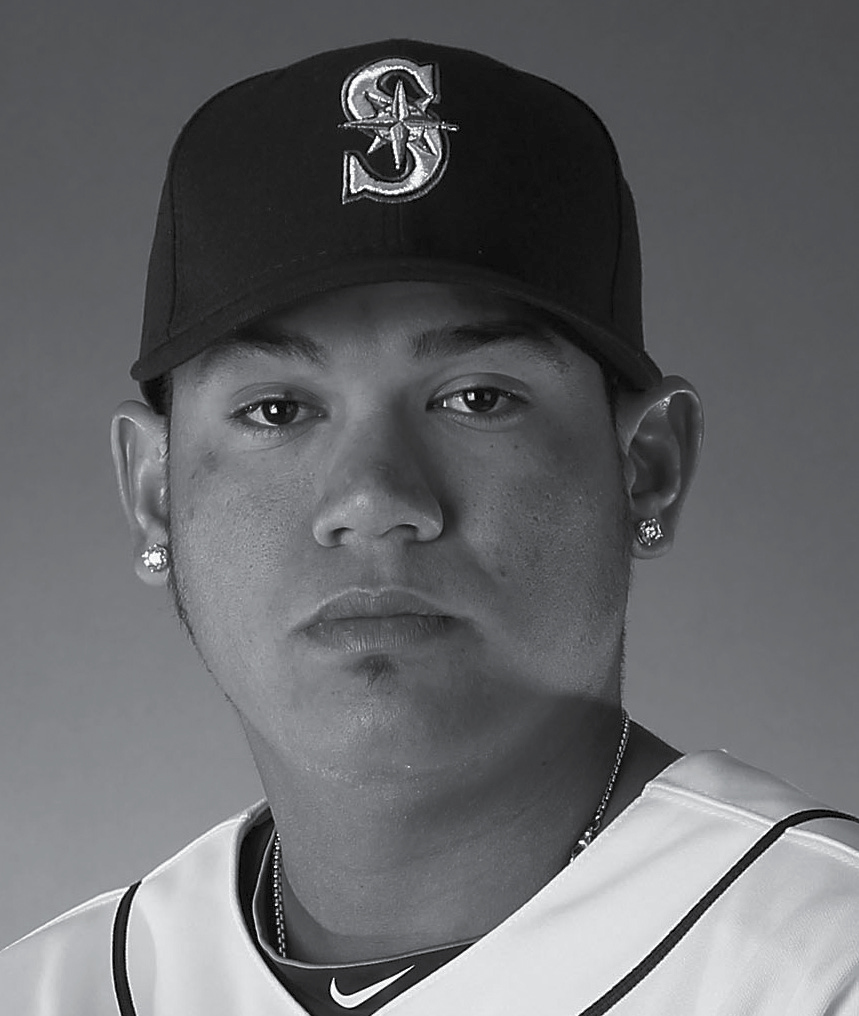
RHP, Mariners, 2005—present.
King Felix is so called because of his consistently strong pitching for the Mariners almost from the start of his career. He won the Cy Young award in 2010. But he has been in the top ten in voting for the award in 2009– 10 and 2012–14. On August 15, 2012, he threw the first ever perfect game (and 23rd in MLB history) for Seattle at home against the Rays.
LIFETIME STATS: W: 154, L: 107, SV: 0, ERA: 3.15, SO: 2,254, CG: 25
#819 Charles Louis “Deacon” Phillippe
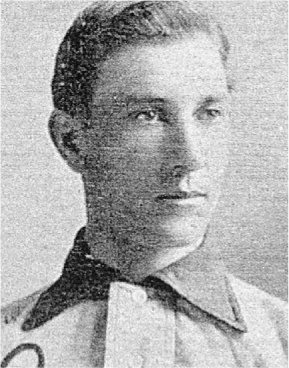
RHP, Louisville (NL), Pirates, 1899–1911
Phillippe, due to his clean-living lifestyle in a rough and tumble era, was dubbed “Deacon” by his peers. He had excellent control: in 2,607 career innings pitched, he only walked 363 batters. That 1.25 walks for every nine innings pitched is the best of any pitcher in the 20th century. Phillippe won over 20 games in his first five years in the National League and was 25–9 in 1903. In the first World Series that year, Phillippe defined the word workhorse as he threw five complete games in the Series, a record that is most unlikely to be broken. He won all of the Pirates’ three games, and lost two as Pittsburgh fell to the Red Sox. In 1969 to celebrate baseball’s centennial year, Deacon Phillippe was elected the all-time top Pirate right handed pitcher.
LIFETIME STATS: W: 189, L: 109, SV: 12, ERA: 2.59, SO: 929, CG: 242
#820 Carl Frederick Rudolf “Fred,” “Bonehead” Merkle
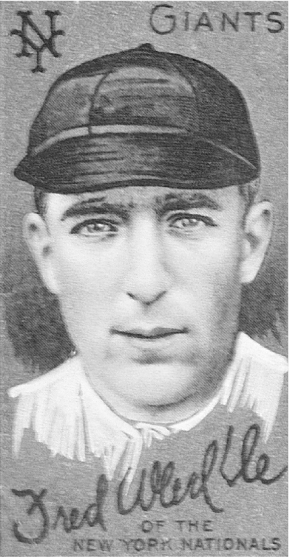
1B, Giants, Dodgers, Cubs, Yankees, 1907–20, 1925–26
Merkle was a very good baseball player, but he is best known for a boner he pulled in a September game in the pennant race of 1908 as he played for the Giants against the Cubs, essentially failing to touch second base at the end of a game. The game went into the record books as a tie and as luck would have it the teams ended the season in a tie, necessitating a playoff game, which, of course, the Cubs won. Merkle was distraught, but he eventually went on to have a fine career as he redeemed himself by helping the Giants to pennants in 1911, 1912 and 1913. He hit a game-winning sacrifice fly in Game Five in 1911, scored five runs in the 1912 Series and hit a homer in Game Four in 1913, all in losing causes. Merkle was also speedy on the base paths as he had 272 career stolen bases, including 11 steals of home.
LIFETIME STATS: BA: .273, HR: 60, RBI: 733, H: 1,580, SB: 272
#821 Louis Victor “Lou,” “Sweet Lou” Piniella
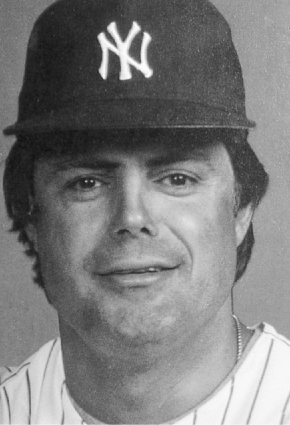
OF-DH, Orioles, Indians, Royals, Yankees, 1964, 1968–84
“Sweet Lou” Piniella first made his mark in 1969, earning Rookie of the Year honors, hitting 21 doubles, six triples, and 11 homers while hitting .282. He hit .301 with a career-best 88 RBI a year later, and two years afterward he was second in the batting race to Rod Carew with an impressive .312 mark. Piniella went to New York in 1974 and the fans loved him for his fiery never-say-die attitude. He hit over .300 five times for the Bombers, and his arm from the outfield was excellent as three times in his career he had 10 or more assists. In 1976, Piniella became the first designated hitter in World Series history, clubbing a double against the Reds.
LIFETIME STATS: BA: .291, HR: 102, RBI: 766, H: 1,705, SB: 32
#822 Gregory Carpenter “Greg,” “Gags” Gagne
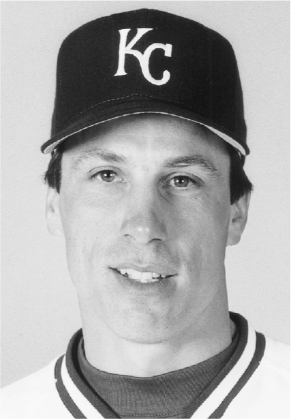
SS, Twins, Royals, Dodgers, 1983–97
A consistent player who played over 100 games in each of his 13 seasons with three clubs, “Gags” was a clutch performer, especially with the Twins. The Fall River, Massachusetts, native was the “glue” in the infield for the Twins championship teams of 1987 and 1991. Despite committing a league-high 26 errors in 1986, Gagne set a club shortstop record by playing in 47 straight errorless games. Gagne tied an American League record with two inside-the-park homers in one game in October, 1986, and homered twice in the 1987 League Championship Series against the Tigers. Gagne was also instrumental at the plate for the Twins in the Series as he hit another homer, scored five runs, tying for the club lead in that department, and singled in the winning run in Game Seven.
LIFETIME STATS: BA: .254, HR: 111, RBI: 604, H: 1,440, SB: 108
#823 Don Lee “The Blazer” Blasingame
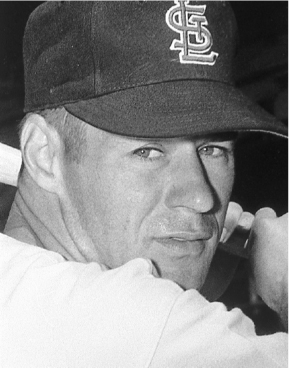
2B, Cardinals, Giants, Reds, Senators, A’s, 1955–66
“The Blazer,” as he was sometimes called, was a steady player throughout his career with five major league clubs. A great contact hitter, Blasingame would spray the ball to all fields and was an exceptional bunter. Four times in his career, he spoiled no-hitters late in the game, with two coming in August of 1963. Blasingame was extremely hard to double up as he led the league four times in grounding out in the fewest double plays, and hit into only 43 in a career spanning over 5,000 at bats.
LIFETIME STATS: BA: .258, HR: 21, RBI: 308, H: 1,366, SB: 105
#824 Peter Thomas “Pete” Ward
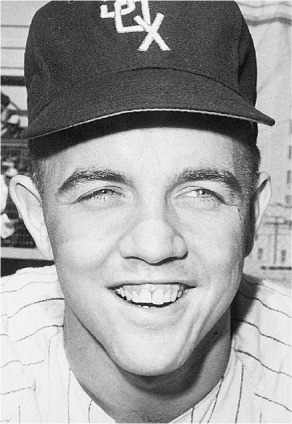
3B-1B-OF, Orioles, White Sox, Yankees, 1962–70
Son of former National Hockey League player Jimmy Ward, this Montreal native had a promising career cut short by injuries. Ward could be a bit erratic in the field as he led AL third baseman in errors in his rookie year, but more than made up for his defensive woes with his clutch hitting, as he beat the Tigers with a homer on Opening Day, 1970. All in all, Ward hit .295 with 22 homers, 84 RBI, and scored 80 runs, as he finished second in the circuit in total bases (289), hits (177), and doubles (34) on the way to being named the Sporting News Rookie of the Year. He had career highs in homers in 1964 including three grand slams, and 94 RBI. His career declined after a 1965 car accident, and he was used primarily as a pinch hitter in his final years, and the clutch Canadian led the AL in that department in 1969, going 17 for 46 for an impressive .370 average.
LIFETIME STATS: BA: .254, HR: 98, RBI: 427, H: 776, SB: 20
#825 Riboberto “Tito,” “Parakeet” Fuentes
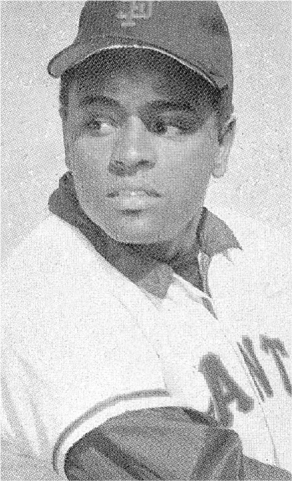
2B-SS-3B, Giants, Padres, Tigers, A’s, 1965–67, 1969–78
The colorful, slick-fielding Fuentes had a fine year with the Giants in 1966, but the following year went into a slump, and was farmed out to Phoenix. In Arizona, Fuentes learned to switch-hit and came back to the big club in 1969, when he hit .295. Fuentes tied the dubious record of getting hit by a pitch three times in the same game, prompting the infamous remark from Tito: “They shouldn’t throw at me. I’m the father of five or six kids.” Tito led National League second basemen in errors in 1971 and 1972, but then set a league record a year later by committing just six errors in fielding, a sparkling .993. Fuentes had 63 RBI for the Giants in 1973 and four years later he scored 83 runs for Detroit while hitting a career-high .309.
LIFETIME STATS: BA: .268, HR: 45, RBI: 438, H: 1,491, SB: 80
#826 Joseph Anthony “Joe,” “Pepi” Pepitone
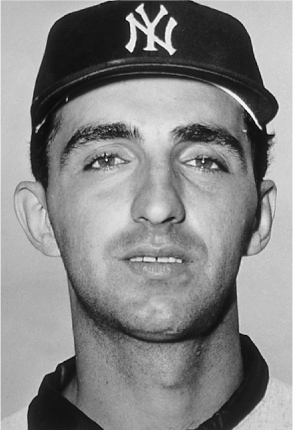
1B-OF, Yankees, Astros, Cubs, Braves, 1962–73
After playing sparingly but well in 1962, Pepitone was deemed ready to assume the first base duties, and the Yankees traded away veteran Moose Skowron. “Pepi,” due to his Italian ancestry and local roots, was an immediate fan favorite and hit .271 while clubbing 27 homers in 1963 to help the Yankees win the AL pennant in 1963. Pepitone continued to hit in 1964, hitting 28 homers and driving in a career best 100 runs as the Yanks won the pennant again, but fell to the Cardinals in the World Series. In 1965, he won his first of three Gold Gloves, but only hit .247. But the Yankees grew tired of the flashy Pepitone’s act, so he was sent to Houston in 1970. Stints in Chicago, Atlanta and Japan followed.
LIFETIME STATS: BA: .258, HR: 219, RBI: 721, H: 1,315, SB: 41
#827 Edmund Walter “Eddie,” “Steady Eddie,” “The Junk Man” Lopat (Lopatynski)
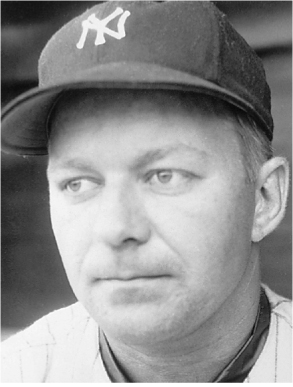
LHP, White Sox, Yankees, Orioles, 1944–55
“Steady Eddie” was a good pitcher, going 50–49 with the second division White Sox in his first four years in the majors, but then was traded to the Yankees, where he was part of a great pitching rotation, helping the Bombers to a record five straight World Championships from 1949 to 1953. Casey Stengel smartly used the junk throwing Lopat after throwing his two fireballers, Allie Reynolds and Vic Raschi to upset the opposition’s timing. Lopat went 109–51 from 1948 to 1954. He won 21 games in 1951 and beat the Giants twice in the 1951 Series. “The Junk Man” also was an impressive 4-1 in World Series play in his career with a sterling 2.60 ERA.
LIFETIME STATS: W: 166, L: 112, SV: 3, ERA: 3.21, SO: 859, CG: 164
#828 Richard Leo “Rich” Gedman
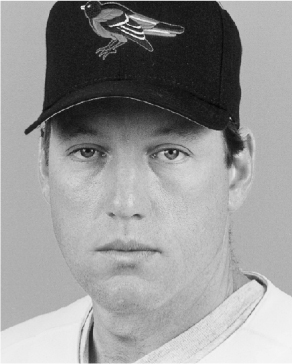
C-DH, Red Sox, Astros, Cardinals, 1980–92
A native of Worcester, less than an hour away from Fenway Park, Rich Gedman took over the catching duties, along with Gary Allenson, for the departed free agent Carlton Fisk in 1980, taking over the full-time position in 1984. Gedman was twice an American League All Star, clouting 24 homers and 26 doubles in 1984, and hitting .295 with 80 RBI in 1985. He also knocked in 65 runs in the pennant winning year of 1986, and his fine play behind the plate helped ensure the Red Sox the American League pennant. His offensive statistics declined in the next few years, and he decided to call it a career in 1992 after short stints with Houston and St. Louis.
LIFETIME STATS: BA: .252, HR: 88, RBI: 382, H: 795, SB: 3
#829 John Cornelius “Johnny” Ray
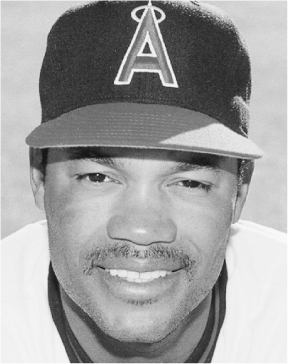
2B, Pirates, Angels, 1981–90
Johnny Ray broke in with the Pirates and in his first full year, and won the 1982 Rookie of the Year Award as the talented switch-hitter led National League second basemen in putouts, assists and total chances while hitting .281 and smashing 30 doubles. Speaking of doubles, Ray tied for the league lead the next two years in that department with 38 each time. In 1986, he made only five errors during the entire season, but was traded to the Angels in 1987. He represented the Halos in his only All Star appearance in 1988.
LIFETIME STATS: BA: .290, HR: 53, RBI: 594, H: 1,502, SB: 80
#830 Charles John “Charlie,” “Jolly Cholly” Grimm
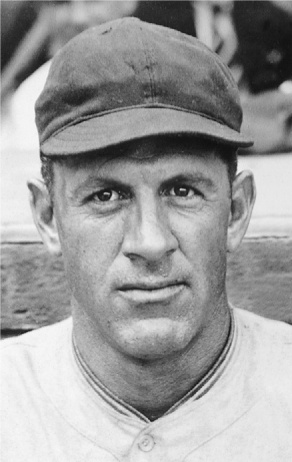
1B, A’s, Cardinals, Pirates, Cubs, 1916, 1918–36
“Jolly Cholly,” so called because of his easy-going demeanor and his love for playing the banjo, had some quality seasons with both the Pirates and Cubs. The constant in Grimm’s game was his excellent fielding at first base, as he didn’t have an outstanding year with the bat until 1923, hitting .345 while knocking in a career-high 99 runs with Pittsburgh. In 1929, now with Chicago, Grimm hit .298 and had 91 RBI as the Cubs captured the 1929 National League pennant. He hit a robust .389 as the Cubs lost the World Series to Connie Mack’s A’s.
LIFETIME STATS: BA: .290, HR: 79, RBI: 1,078, H: 2,299, SB: 57
#831 Cristobal Torriente
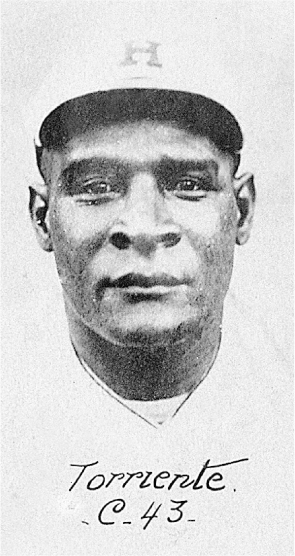
OF, NY Cubans, Chicago American Giants, All Nations, KC Monarchs, Detroit Stars, Cleveland Cubs (Negro Leagues), 1913–28, 1932. Hall of Fame, 2006
Torriente was a powerful slugger who arguably was one of the greatest players ever to come out of Cuba. Though small in stature at only 5'9", “The Cuban Strongboy” proved to be a powerful left-handed swinger and was a terrific bad ball hitter. The talented Cuban possessed a great throwing arm and was an outstanding defensive outfielder. Torriente led the Chicago American Giants to three straight Negro League Championships from 1920 to 1922, hitting a stellar .396 in 1920. He even took a turn on the mound now and then, compiling a 16–5 record. In the 12 years he played in the Cuban League, Torriente hit .352, leading the league in hits and stolen bases three times, and in triples and home runs four times. His career-best batting average was a lusty .402 in 1916.
LIFETIME STATS: BA: .335, HR: 53, H: 774
#832 Thomas Tarlton “Tom” Brown
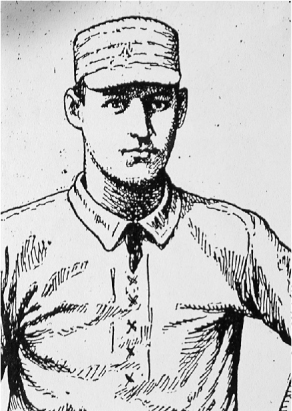
OF, Baltimore (AA), Columbus (AA), Pittsburgh (AA), Pittsburgh (NL), Indianapolis (NL), Boston (NL), Boston (PL), Boston (AA), Louisville (NL), Browns, Senators, 1882–98
Tom Brown was a journeyman’s journeyman, playing for 11 teams in his 17-year career, including three Boston franchises in a row, the Boston Braves of the National League (1888–89), the Boston Red Stockings of the Player’s League (1890) and the Boston franchise in the American Association (1891). In 1891, Brown had his best season as he led the league with 189 hits, 177 runs, 21 triples, and 106 stolen bases. Brown led off a game with a home run 11 times in his career. He then moved to the Colonels of Louisville for the next three seasons, leading the loop in steals in 1893 with 66.
LIFETIME STATS: BA: .265, HR: 64, RBI: 736, H: 1,951, SB: 657
#833 Howard Ellsworth “Smokey Joe” Wood
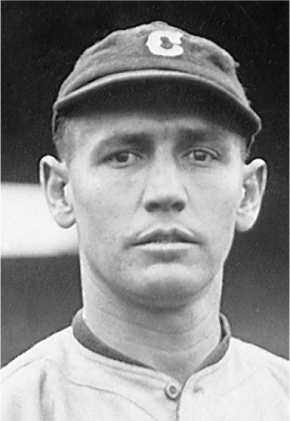
RHP, Red Sox, Indians, 1908–15, 1917–22
The flame-throwing righty found his groove in 1911 when he won 23 games for fifth-place Boston, including a no-hitter in July against St. Louis. He was dubbed “Smokey Joe” after that. In 1912, Wood enjoyed his finest season, one of the finest any pitcher has ever had, as the right-hander started 36 games, completing 35 with 10 shutouts, a 1.91 ERA, 258 strikeouts, and an eye-popping 34–5 record, winning 16 straight at one point in that fabulous year. His 34 victories are still a Red Sox record and his 10 shutouts tied Cy Young for the team record for a season. The Bosox won the American League pennant and beat the Giants in the World Series. In 1913, Wood broke his right thumb and pitched in pain all year long, going 11–5. He retired in 1916, but made a comeback as an outfielder for the Indians, hitting .296 with five homers and 22 doubles in 119 games.
LIFETIME STATS: W: 116, L: 57, SV: 11, ERA: 2.03, SO: 989, CG: 121. BA: .283, HR: 23, RBI: 325, H: 553, SB: 23
#834 Charles William “Charlie” Moore
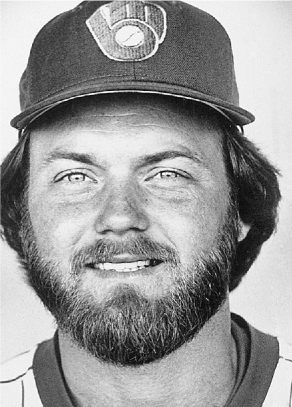
C-OF, Brewers, Blue Jays, 1973–87
Moore spent most of his career with the Milwaukee Brewers platooning as catcher and hitting against left-handed pitchers. He did manage to crack the Brewer lineup in the outfield as he was a regular there for the only time in his career. In 1982, Moore, never a potent hitter in the regular season, had the hot bat for the Brewers as he hit an astounding .462 in the American League Championship Series, helping Milwaukee to defeat the California Angels in five games. The right-handed hitter continued his fall heroics in the Series, garnering nine hits in 26 at-bats to the tune of a robust .346 average. Despite Moore’s fine hitting, the Brewers lost the World Series that year to the St. Louis Cardinals in seven games. He hit .284 playing regularly in right field the following year.
LIFETIME STATS: BA: .261, HR: 36, RBI: 408, H: 1,052, SB: 51
#835 James Kenneth “Jim,” “Frenchy” Lefebvre
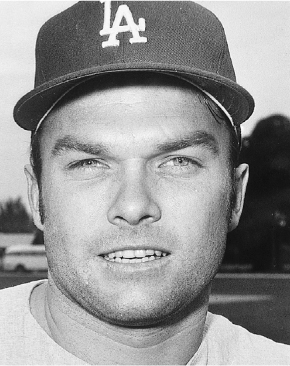
2B-3B, Dodgers, 1965–72
Lefebvre (pronounced “Luh-FEV-er”) was part of the Dodgers’ switch-hitting infield along with Wes Parker, Maury Wills and Jim Gilliam. He led the anemic-hitting Dodgers in homers as a rookie in 1965 with 12 as Los Angeles used its pitching prowess to beat the Twins in seven games in the 1965 Fall Classic. Lefebrve homered from both sides of the plate in a 1966 game as he doubled his homer output to 24, while collecting a career-high 74 RBI. Later on that year, he contributed a homer in the 1966 World Series, connecting off Oriole ace Dave McNally.
LIFETIME STATS: BA: .251, HR: 74, RBI: 404, H: 756, SB: 8
#836 Granville Wilbur “Granny” Hamner
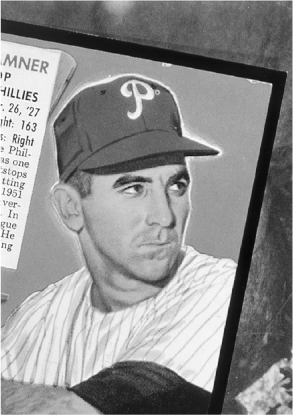
SS-2B, Phillies, Indians, A’s, 1944–59, 1962
Granville “Granny” Hamner was but a mere lad of 17 when he made his debut with the 1944 Phillies, but it wasn’t until 1948 that he became a starter. Between 1949 and 1954, Hamner played at least 150 games a season, and he was selected by Phillies fans as the club’s all-time shortstop in 1969. He proved he could hit in the clutch as he hit 30 or more doubles four times in his career. He switched to second base in 1954 and had his best year at the plate, hitting .299 with 13 homers, 89 RBI and 39 doubles.
LIFETIME STATS: BA: .262, HR: 104, RBI: 708, H: 1,529, SB: 35
#837 George Henry “Tioga” Burns
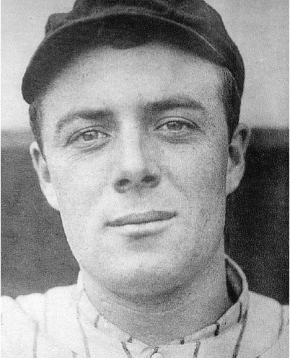
1B-OF, Tigers, A’s, Indians, Red Sox, Yankees, 1914–29
Consistent would not be a word to describe “Tioga” George Burns’s career as he hit as high as .361, and as low as .224. In his first year with the Tigers, Burns hit a respectable .291 and led the American League in putouts with 1,576, but he also committed a league high 30 errors. He was traded to Philadelphia and hit .352, leading the league with 178 hits, and knocking home 70 runs. He slumped again in 1920, causing Connie Mack to deal him to the Indians, and Burns hit .300 in the World Series as Cleveland won it. Burns was a part-timer in 1921, and hit .361, but was traded to Boston. Cleveland reacquired Burns in 1924, and he responded brilliantly in 1926 as he swatted a then major league record 64 doubles, hit .358, led the loop with 216 hits, drove in 114 runs, and captured the league MVP Award.
LIFETIME STATS: BA: .307, HR: 72, RBI: 951, H: 2,018, SB: 154
#838 Thomas William “Tommy,” “Corky” Corcoran
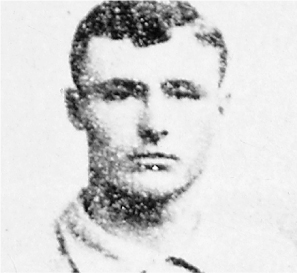
SS-2B, Pittsburgh (PL), Philadelphia (AA), Dodgers, Reds, Giants, 1890–1907
Tommy Corcoran started his career at shortstop, fielding the ball without the benefit of a glove although he made a smooth transition to the leather. An excellent fielder with or without a glove, he set a major league record with the Reds in 1903 with an astounding 14 assists in one game. He led the league in fielding four times, and twice in assists. He is also among the career shortstop leaders in games played and total chances per game. Corcoran was traded to the Giants in 1907, where he played second base.
LIFETIME STATS: BA: .256, HR: 34, RBI: 1,135, H: 2,252, SB: 387
#839 Guy Jackson Hecker
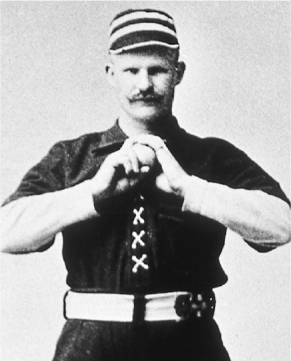
RHP-1B-OF, Louisville (AA), Pirates, 1882–90
The versatile Guy Hecker not only could pitch well, but could hit, and is the only pitcher to ever win a major league batting title, hitting .341 in 1886. In one game alone, Hecker went six for seven, and scored seven times, a record for any player, let alone a pitcher. Three of those hits were inside-the-park homers; the only time in American Association history that any player accomplished that feat. As for his pitching prowess, in 1884, Hecker led the league with 670 2/3 innings pitched, 385 strikeouts, 72 complete games, and won an unbelievable 52 games. Hecker clearly benefited from the 50 foot distance from the pitching rubber to the plate. Those many innings took a toll on his arm but he still remained a threat with the bat.
LIFETIME STATS: W: 175, L: 146, SV: 1, ERA: 2.92, SO: 1,099, CG: 310, BA: .282, HR: 19, RBI: 278, H: 812, SB: 123
#840 James Anthony “Jimmy” Piersall
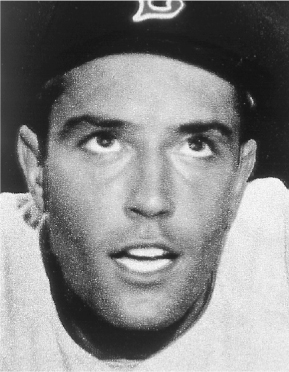
OF, Red Sox, Indians, Senators, Mets, Angels, 1950, 1952–67
Jimmy Piersall was a talented but high-strung athlete who had major bouts with mental illness, especially early in his career. The illness got out of control in 1953 and the Red Sox ordered Piersall to get counseling. He underwent a series of shock treatments, which somewhat tempered his bizarre behavior. Returning to the field, he was brilliant in the outfield. Piersall led the league thrice in fielding percentage, twice in putouts, and once in double plays, as well as winning Gold Gloves in 1958 and 1961. Piersall made his mark offensively too, as he hit .293 in 1956, leading the AL in doubles with 40, and had 176 hits and 87 RBI.
LIFETIME STATS: BA: .272, HR: 104, RBI: 591, H: 1,604, SB: 115
#841 George Burton Pinkney
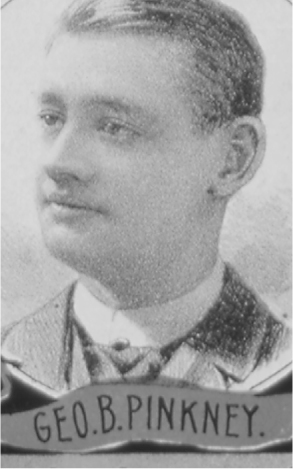
3B-2B, Cleveland (NL), Brooklyn (AA), Dodgers, Browns, Louisville (NL), 1884–93
George Pinkney was a steady infielder for a number of teams, most particularly for Brooklyn, who won back-to-back championships in two different leagues, the American Association and the National League, an unprecedented feat. The 5'7" Pinkney was a threat on the bases, stealing 44 or more bases for five years in a row, and totaling 296 thefts for his career. He scored over 100 runs five straight times in his career, leading the league in 1888 with 134. Pinkney also had a keen eye at the plate, leading the AA in drawing walks in 1886 with 70. He also led AA third sackers in fielding in 1887 and 1889.
LIFETIME STATS: BA: .263, HR: 21, RBI: 539, H: 1,212, SB: 296
#842 Woodson George “Woodie” Held
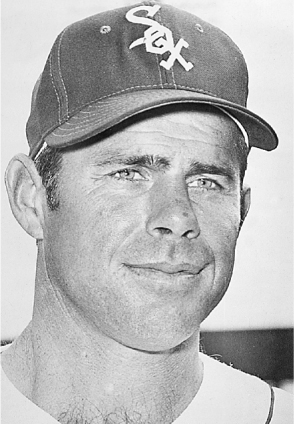
SS-OF-2B-3B, Yankees, A’s, Indians, Senators, Orioles, Angels, White Sox, 1954, 1957–69
Woodie Held was a shortstop with power, a rarity during the time he played. He hit a career-best 29 homers in 1959, and consistently hit 19 or more homers during the bulk of his career in Cleveland. In 1961, Held clouted 23 home runs and had a career-high 78 RBI. This power did come at a cost, however, since Held struck out often, topping the century mark three times in his career. At times, he would get so upset with himself after whiffing, he would throw tantrums.
LIFETIME STATS: BA: .240, HR: 179, RBI: 559, H: 963, SB: 14
#843 George Hartley McQuinn
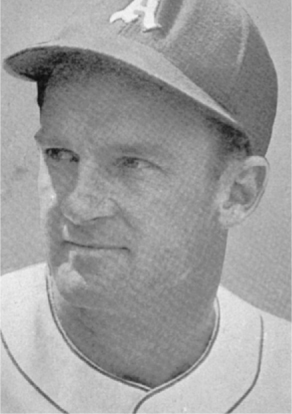
1B, Reds, Browns, A’s, Yankees, 1936, 1938–48
A six-time All Star, George McQuinn was mired in the Yankee farm system from 1931 to 1936, because Lou Gehrig was playing in New York. He played briefly for the Reds, and then the St. Louis Browns drafted him in 1937. He hit in 34 consecutive games in 1938 on the way to hitting .324 and scoring 100 runs. The following year he hit .316, and scored 101 runs. A slick fielder, McQuinn led American League first basemen in fielding on three occasions and in assists twice. In the 1948 All Star game, when he was back with the Yankees, the smooth-fielding McQuinn set All Star records with 14 putouts in 14 total chances.
LIFETIME STATS: BA: .276, HR: 135, RBI: 794, H: 1,588, SB: 32
#844 Renaldo Antonio “Rennie” Stennett
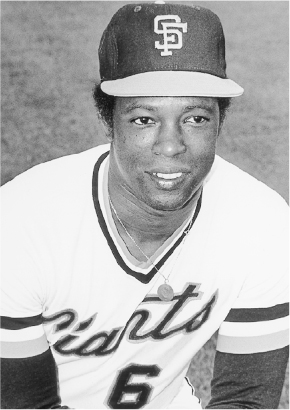
2B-SS, Pirates, Giants, 1971–81
On September 16, 1975, Rennie Stennett became the first player in the 20th century to get seven hits in a nine inning game, as the Pirates walloped the Cubs, 22–0. Stennett started out his career in the Pirates chain as an outfielder, but moved to second base in 1973. He shone defensively, leading NL second baseman in both putouts and total chances per game that year and again in 1976. He also hit .291 that year while scoring 84 runs. In 1973, he went 59 straight games without an error. A contact hitter, Stennett had his best year at the plate in 1977, where he finished second in the NL batting race to Dave Parker, hitting .336 and stealing a career-best 28 bases.
LIFETIME STATS: BA: .274, HR: 41, RBI: 432, H: 1,239, SB: 75
#845 James Reubin “Jim,” “Rawhide” Tabor
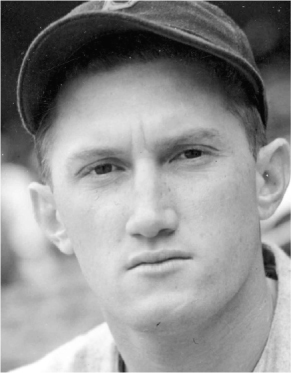
3B, Red Sox, Phillies, 1938–44, 1946–47
Defensively, the up side of Jim Tabor was he led American League third basemen in putouts and assists once each and twice in double plays. The down side was he led AL third sackers in errors for five consecutive years. Called “Rawhide” because he backed down from nobody, he once slammed the great Ted Williams against a locker after a minor league game in which Tabor thought Williams wasn’t hustling. Tabor had a Fourth of July to remember in 1939 when he hit four homers in a doubleheader against the Philadelphia A’s, including two grand slams as he totaled 11 RBI that day. Overall, Tabor was a steady offensive performer with a lifetime batting average of .270.
LIFETIME STATS: BA: .270, HR: 104, RBI: 598, H: 1,021, SB: 69
#846 William Frederick “Billy” Jurges
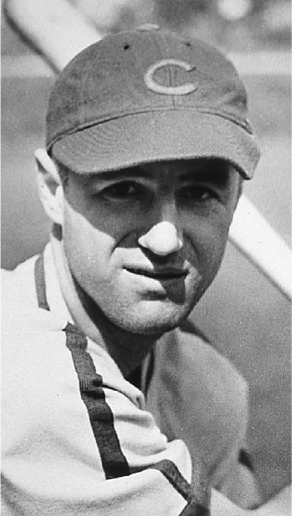
SS-3B, Cubs, Giants, 1931–47
Billy Jurges was a colorful character who was a talented infielder, especially during the bulk of his career with the Cubs. In 1932, Jurges was enjoying a fine season when he was shot in the ribs and hand by a depressed female fan in a hotel room. In 1935, the fiery Jurges got into a fight during a game with third-string Pirate catcher Walker Stephenson over a remark about the Civil War to which Stephenson, a native North Carolinian, took exception. Jurges had a great year in 1937 as he hit a career-best .298 and led the league in fielding for the third time. After a trade to the Giants, Jurges broke his leg in 1940, but the tough Jurges came back and played three more steady seasons in New York.
LIFETIME STATS: BA: .258, HR: 43, RBI: 656, H: 1,613, SB: 36
#847 Derrel McKinley “Bud” Harrelson
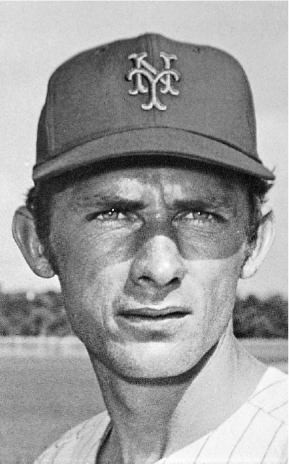
SS-2B, Mets, Phillies, Rangers, 1965–80
Harrelson was a small package, weighing in at 160 pounds on a good day, but was a spark at shortstop for the Mets as they won an improbable World Series victory over the heavily favored Baltimore Orioles in 1969. He was a daring base runner, stealing home on two occasions. The slick-fielding shortstop was twice an All Star, and won the Gold Glove Award in 1971 after tying the since-broken NL record of 54 straight games without an error at shortstop a year earlier. In 1973, the Mets took on the Big Red Machine in the League Championship Series, a series the Mets would win in five games. Pete Rose was on first base in Game Three at Shea Stadium with the Mets ahead 8–2 in the fifth, when Rose barreled into Harrelson covering second. The smaller Harrelson retaliated, and both benches emptied. The fans, especially in left field where Rose played that day, pelted him with various missiles. Order was finally restored only when Willie Mays, Tom Seaver and Manager Yogi Berra appealed to the riled up fans to calm down. In 1977, Harrelson’s batting average fell to an unimpressive .178, but he continued to shine defensively, committing a paltry six errors in 98 games.
LIFETIME STATS: BA: .236, HR: 7, RBI: 267, H: 1,120, SB: 127
#848 Casimir Eugene “Cass” Michaels (Kwietniewski)
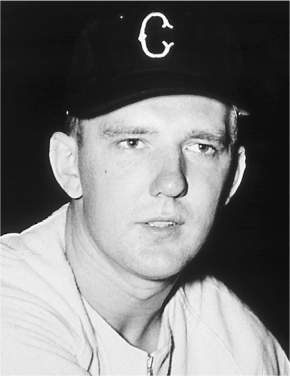
2B-SS-3B, White Sox, Senators, Browns, A’s, 1943–54
Coming up in 1943 at the tender age of 17 and then known by his given name, Casimir Eugene Kwietniewski, the half Polish–half German infielder decided to Americanize his name to Cass Michaels. Sent down to the minors in 1944, he played well there and was brought up to the White Sox in 1945 to be their regular shortstop until All Star Luke Appleing returned from the service. Michaels’ best offensive year was in 1949 when he hit .308 and had 83 RBI while drawing 101 walks. He continued to be a steady performer for three other teams, but had to prematurely call it a career at 28, after suffering blurred vision as a result of being hit by a pitch in 1954.
LIFETIME STATS: BA: .262, HR: 53, RBI: 501, H: 1,142, SB: 64
#849 Frederick C. “Fred,” “Sure Shot” Dunlap
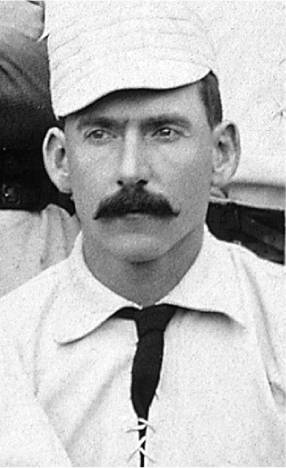
2B, Cleveland Spiders (NL), St. Louis (UA), Maroons (NL), Detroit (NL), Pirates, New York (PL), Washington (AA), 1880–91
Dunlop was dubbed “Sure Shot” because of his excellent fielding ability, leading the leagues he played in various categories throughout his career. He had above average range and sure hands, and playing without a glove in those days, he could make the spectacular play with either hand. In 1884, millionaire Henry Lucas formed the Union Association and signed Dunlop away from Cleveland to St. Louis. He led the new league in hitting with a robust .412 batting average (52 points ahead of the second-place hitter), home runs, hits, runs, slugging percentage, and on-base percentage as the Maroons waltzed to the pennant. The next year the Union Association folded, and Dunlop was fined $500 by the National League for jumping leagues. He went to Detroit in 1886, helping the Wolverines to the National League flag.
LIFETIME STATS: BA: .292, HR: 41, RBI: 366, H: 1,159, SB: 85
#850 Aurelio “Radio” Rodriguez
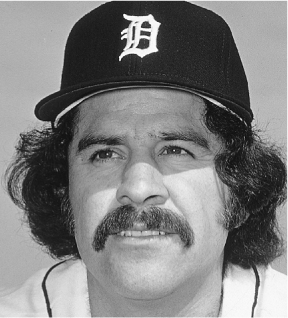
3B, Angels, Senators, Tigers, Padres, Yankees, White Sox, Orioles, 1967–83
A great fielding third baseman, Aurelio Rodriguez won the Gold Glove Award in 1976, breaking Brooks Robinson’s hold of 16 straight awards at third base. In 1968, the pitchers dominated in baseball, but Rodriguez had the longest hitting streak in the American League that season at 16 games. Though not considered a power hitter, he managed to hit 19 homers in one season and 15 in another. His impressive fielding average of .987 in 1978 was third highest in major league history for shortstops at the time. In part-time duty with the Yankees in 1981, he hit .346 and then was five for 12 in the 1981 World Series loss to the Los Angeles Dodgers for a .417 average.
LIFETIME STATS: BA: .237, HR: 124, RBI: 648, H: 1,570, SB: 35
#851 Solomon Joseph “Solly” Hemus
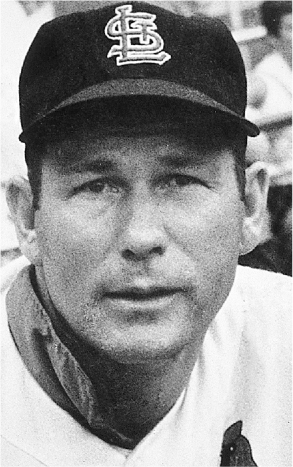
SS-2B-3B, Cardinals, Phillies, 1949–59
Solomon Joseph Hemus was a steady infielder for both the Cardinals and Phillies, and was the regular shortstop for the Redbirds from 1951 to 1953. He was masterful at getting on base as he drew a lot of walks for a non-power hitter and he led the league three times in getting hit by pitches, including 20 plunks in 1952. In 1954, he hit a career-high .304. He was named player-manager of the Cardinals in 1959 after playing two and a half years with the Phillies, and used himself primarily as a pinch hitter.
LIFETIME STATS: BA: .273, HR: 51, RBI: 263, H: 736, SB: 21
#852 Bruce Anton Bochte
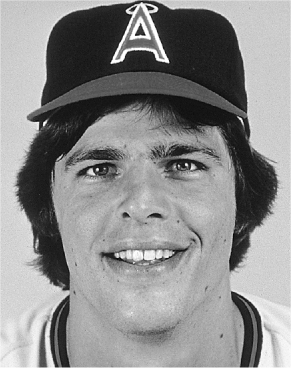
1B-OF, Angels, Indians, Mariners, A’s, 1974–82, 1984–86
The 6'3" lefty swinging Bochte was an impressive hitter and the star of the early Mariners teams in the late 70s and early ’80s. He led Seattle in hitting three of the five years he played there. Bochte hit .300 or better twice with the Mariners, including 1979, when he hit .316 with 16 home runs and an even 100 RBI. Bochte was Seattle’s player representative during the 1981 strike, and that experience left a bitter taste in his mouth, prompting him to walk away from baseball and move his family to an island in Puget Sound to get away from it all. After a one year hiatus, he returned to the game with the A’s in 1984 and played three more seasons, his best in 1985 when he hit 14 homers, while hitting .295.
LIFETIME STATS: BA: .282, HR: 100, RBI: 658, H: 1,478, SB: 43
#853 Russell Earl “Bucky” Dent (O’Dey)
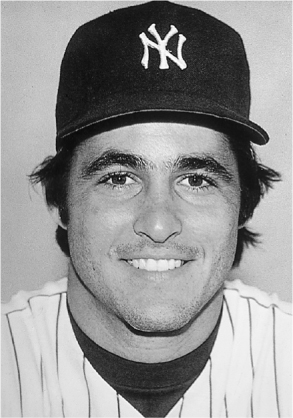
SS, White Sox, Yankees, Rangers, Royals, 1973–84
Forever known in Boston as Bucky “Bleepin’” Dent, he is best known for the three-run homer he hit over Fenway Park’s Green Monster off pitcher Mike Torrez, erasing a 2–0 deficit on the way to a 5–4 Yankee playoff win over the Boston Red Sox on October 2, 1978. He topped off 1978 with an MVP performance in the World Series win against the Dodgers, going six for eight in the final four games while hitting a stellar .417. Dent was drafted by the White Sox, where he became the regular shortstop in 1974, and was second in the Rookie of the Year balloting while hitting .275. In 1977, Dent was traded to the Yankees where he made the All Star team in 1980 and 1981. In 1982, he was traded to the Rangers, where he led AL shortstops in fielding for the third time in his career.
LIFETIME STATS: BA: .247, HR: 40, RBI: 423, H: 1,114, SB: 17
#854 David “Big Papi” Ortiz
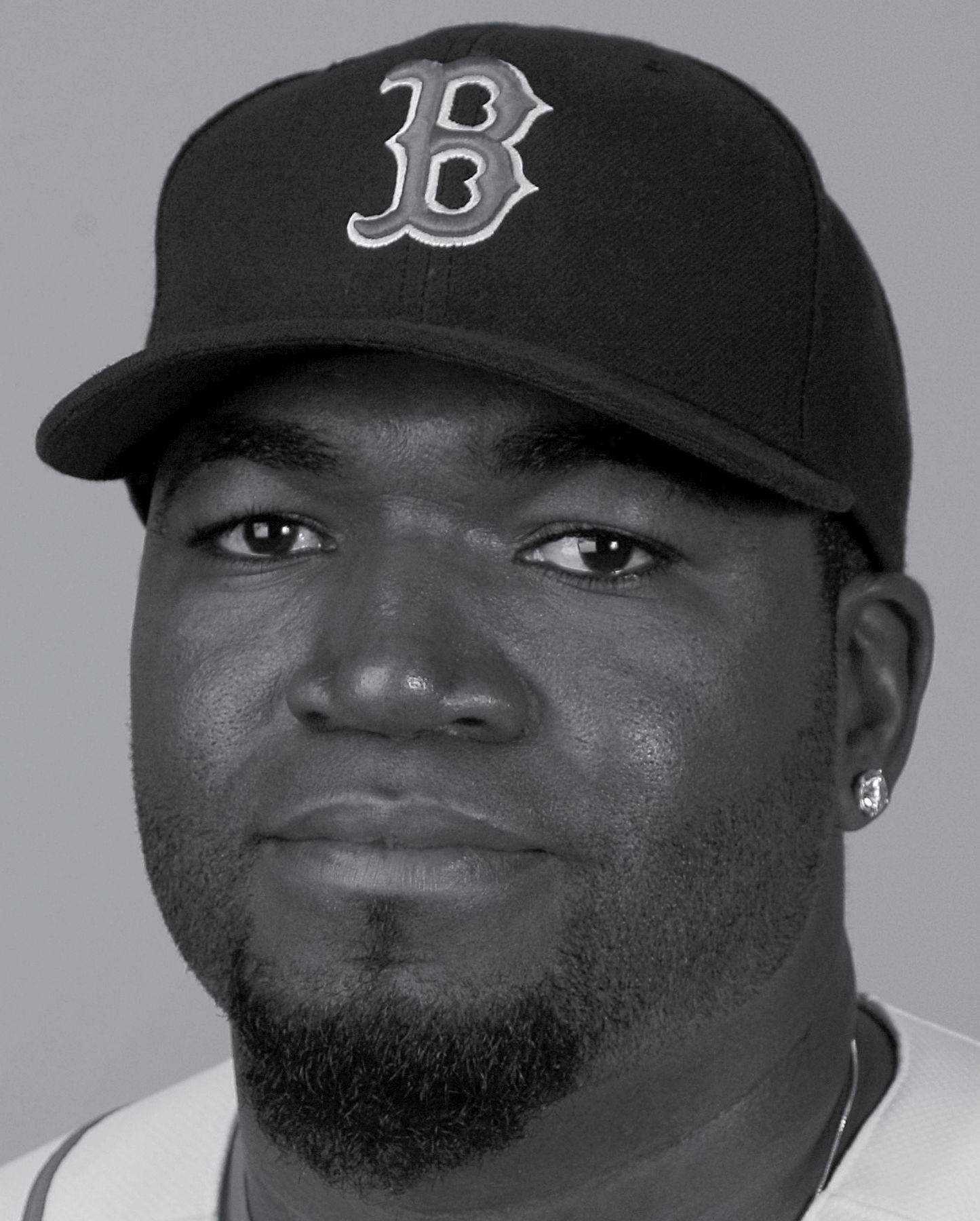
1B-DH, Twins, Red Sox, 1997–2016
The imposing Ortiz is one of the foundations of the Red Sox championship string, beginning in 2004. Boston signed him in 2003 after a lackluster stint with the Twins. Ortiz has always been a post-season warrior. Few will forget the towering home run against the Tigers in Game 2 of the 2013 ALCS to turn that series around. He followed it by winning the MVP of the World Series that season.
LIFETIME STATS: BA: .286, HR: 539, RBI: 1,762, H: 2,461, SB: 17